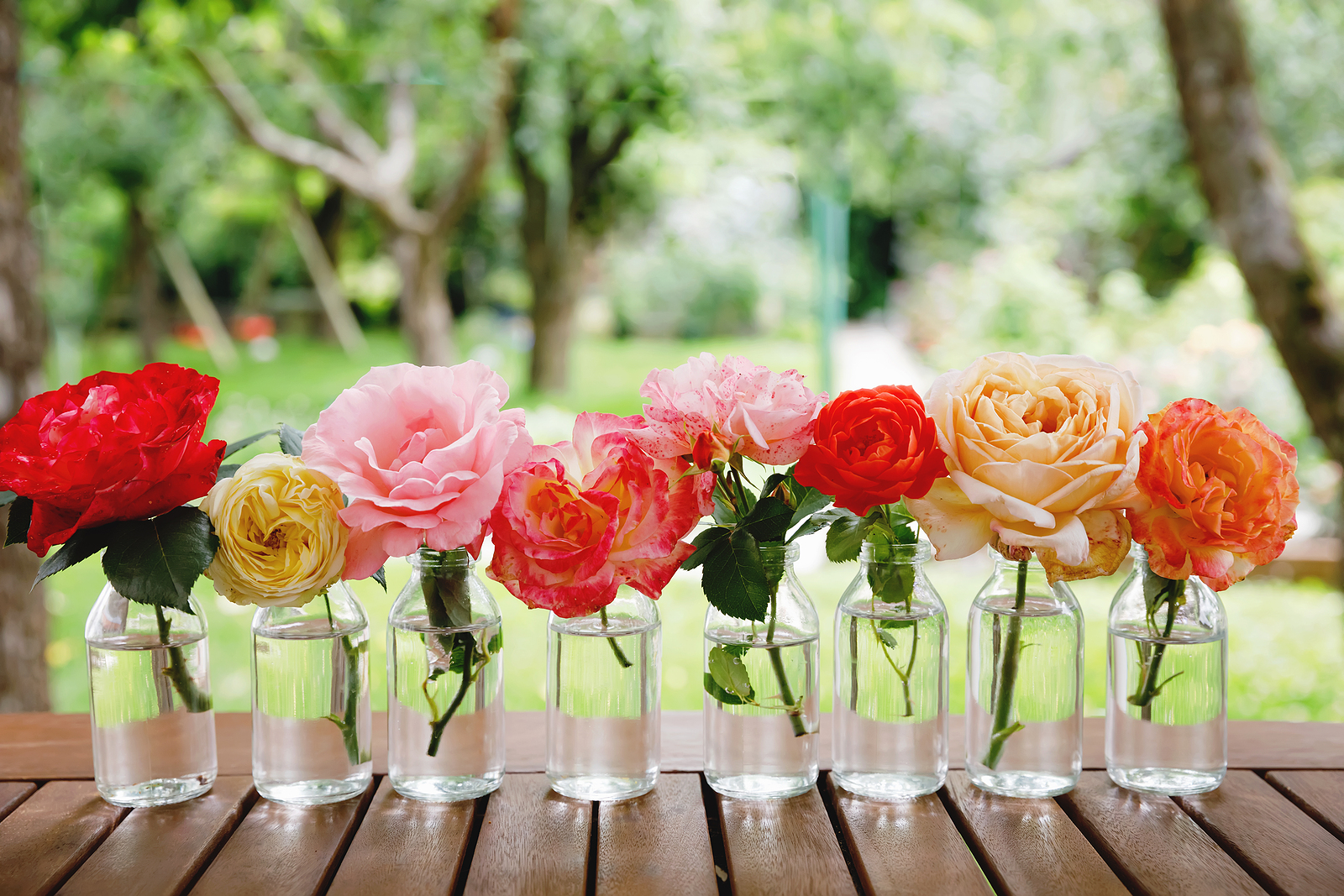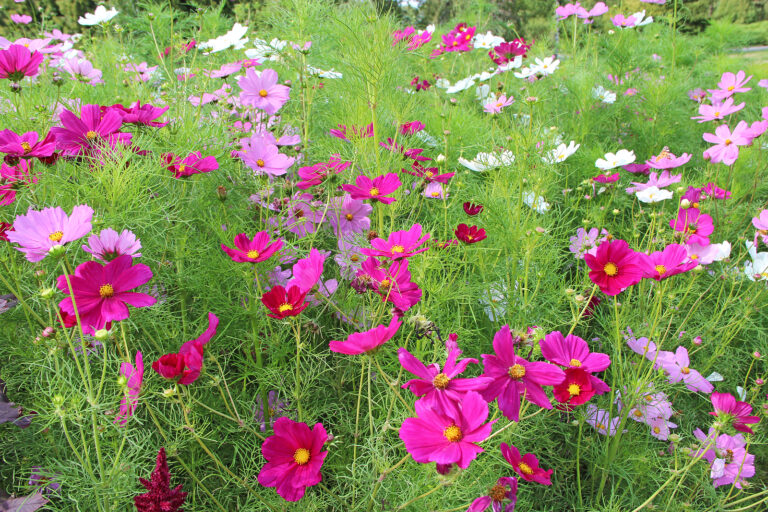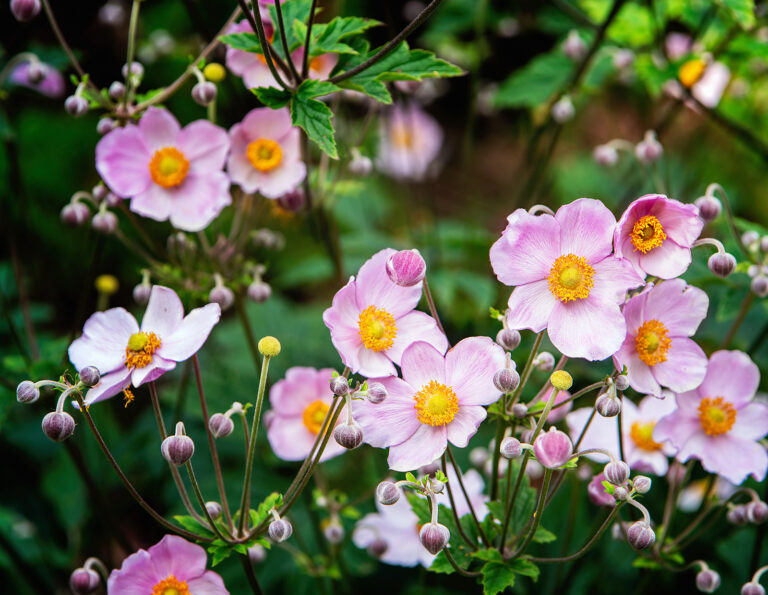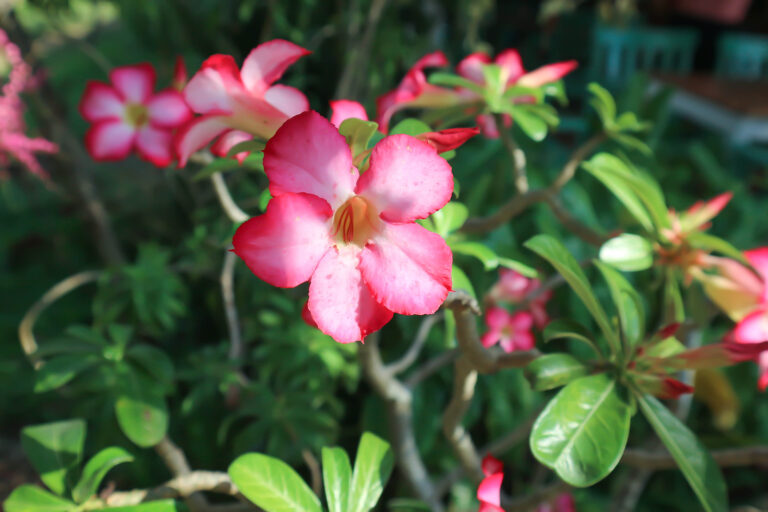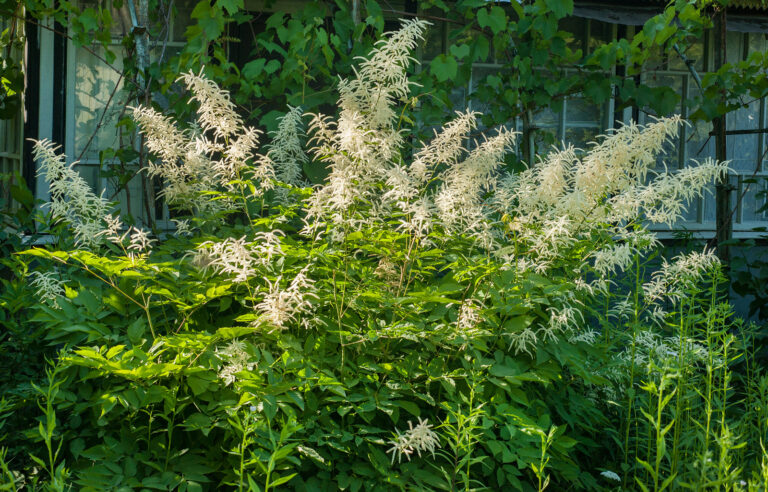Cut Flower Basics
Cut flowers need proper care to prolong the length of time you can enjoy them. Here are a few suggestions:
- Pick cut flowers in the morning when stems and leaves are turgid with sap and moisture. This will help them keep their form. Flowers and their stems in the garden lose moisture and begin to wilt as the day progresses.
- Use a sharp knife or scissors when cutting flowers. A clean-cut will help cut flowers absorb water once they are placed in a vase. Be aware that scissors that are not sharp can crush stem tissues blocking the uptake of water. Recut the stems every day. It’s always best to cut stems underwater.
- Place flowers in water immediately after cutting. Have a bucket or jar half-filled with water when you cut flowers. Place the stems in water immediately up to just below the base of the lowest flower to keep the stems hydrated. Don’t let cut flowers lie around out of water; the stems will seal themselves and won’t be able to absorb water.
- When preparing cut flowers, remove leaves that will be underwater when placed in the vase. Don’t let foliage set beneath the water level; it will begin to rot and muddy the water.
- Cut the stems at an angle; this allows a larger area of the cut stem to be underwater where it can absorb water. Make the cut underwater so that air does not enter the stem.
- Hard or woody-stemmed flowers – such as roses and lilacs — should be cut with a sharp knife then crush the wound with a hammer to open the woody tissue to aid the penetration of water.
- Hollow stemmed flowers – such as delphiniums or amaryllis – should be turned upside down after being cut, then fill the hollow stems with water. Use a piece of damp cotton to plug the stem holding the water in then stand the flower upright in a vase of water.
- To increase the bloom time of cut flowers, plunge their stems into the water and let them stand overnight before arranging them. A crushed aspirin, a lump of sugar, or a copper coin placed in the water is said to prolong the life of cut flowers.
- Always keep vases and flower containers clean, clean, clean. Bacteria-laden water or containers will shorten the bloom time of cut flowers.
- Don’t crowd too many flowers into one container; crowding can crush stems. Air circulation around flowers is beneficial. If there are too many flowers on hand for one vase, use two, or even three. Do not crowd flowers.
- To support long-stemmed flowers upright in a vase, fold a piece of chicken wire several times and place it in the neck of the case. You can then slip the stems through the holes in the mesh.
- If arranging cut flowers for artistic effect—without regard to the length of time the flowers last – the total height of the container and flowers should be 2½ times the height of the container alone. If the desire is to keep the flowers alive as long as possible, place as much of the stem underwater as possible.
- Avoid exposing cut flowers to the draught of an open window or door or an electric fan or the forced air from a furnace or air conditioner. Don’t expose cut flowers to bright sunlight. The cooler the room in summer, the longer the flowers will live.
- As cut flowers start to wilt, you can cut off the ends of their stems and place them in hot water for half an hour. Protect the flowers and leaves from steam by wrapping them in a cloth. While the stems are soaking in hot water, fill the vase with fresh cold water before setting the flowers in again.
- When changing the water, cut half an inch or so from the ends of stems with a clean, slanting cut. This will reopen the water-absorbing vessels. Stems cut squarely will rest flat on the bottom and not absorb water.
- In a hot room, you can rejuvenate cut flowers by adding ice cubes to the water. You can revive petals by misting them with water—or move them to a cooler room or windowsill. A cool temperature will keep blooms longer.
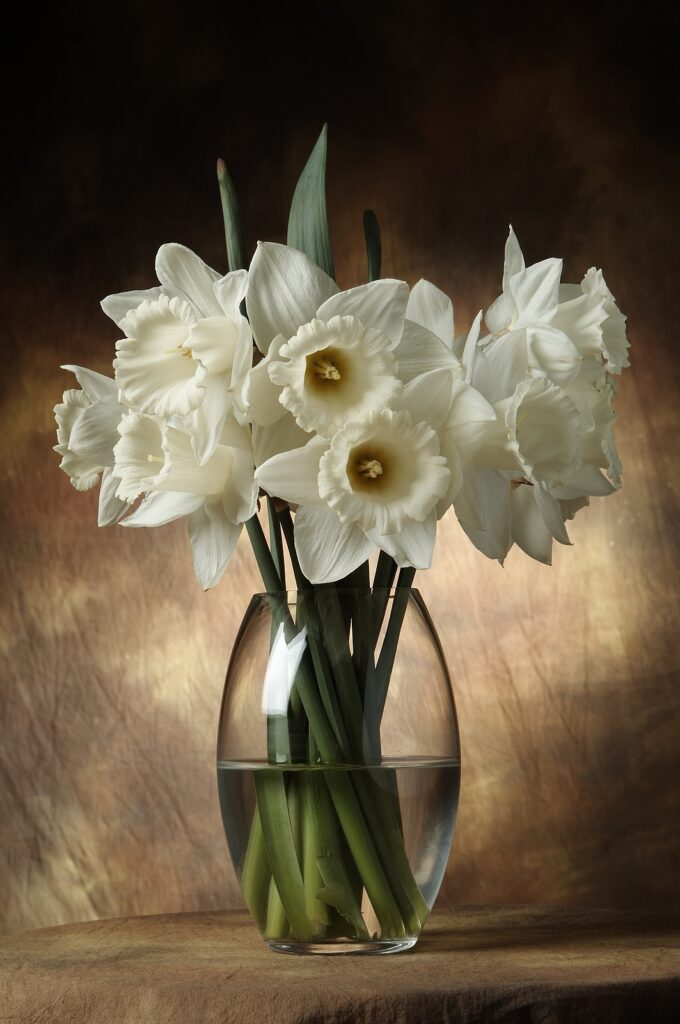
Tips for favorite cut flowers
- Cut daffodils when they are in bud.
- Cut peonies when the buds are just showing color.
- Cut dahlias when the flowers have opened.
- Cut gladiolus when the first floret at the base of the stem opens. It is not uncommon for the topmost bud to remain closed.
- Cut poppies while they are in bud, then seal the ends by dipping the stems into boiling water. It’s best to cut poppies at night.
- Cut an inch off the stems of carnations each day and place them in freshwater.
- Cut roses when the buds are soft.
- Cut asters when they are half-open.
- Support the heads of large chrysanthemums, bumping will cause the petals to fall.
- Stand violas and peonies in deep water for several hours after cutting.
- If roses, viburnums, or other woody-stemmed flowers begin to droop, trim a half-inch off the bottom of each stem and stand them in boiling water before returning them to the vase.
- Poinsettias used as cut flowers should have the stem ends sealed to avoid bleeding white, milky fluid. Place the ends in boiling water for 10 minutes or singe the ends over a flame.
- Dahlias, oriental poppies, and euphorbia also “bleed” like poinsettias. Sear the ends by passing them through a flame or dip them in hot water for a moment.
Favorite flower calendar
Here is a birth month flower calendar: January, carnation; February, primrose; March violet; April, daisy or lily; June, rose; July, waterlily; August, poppy; September, dahlia; October, begonia; November, chrysanthemum; and December, poinsettia.
Related articles about cutting flowers:

